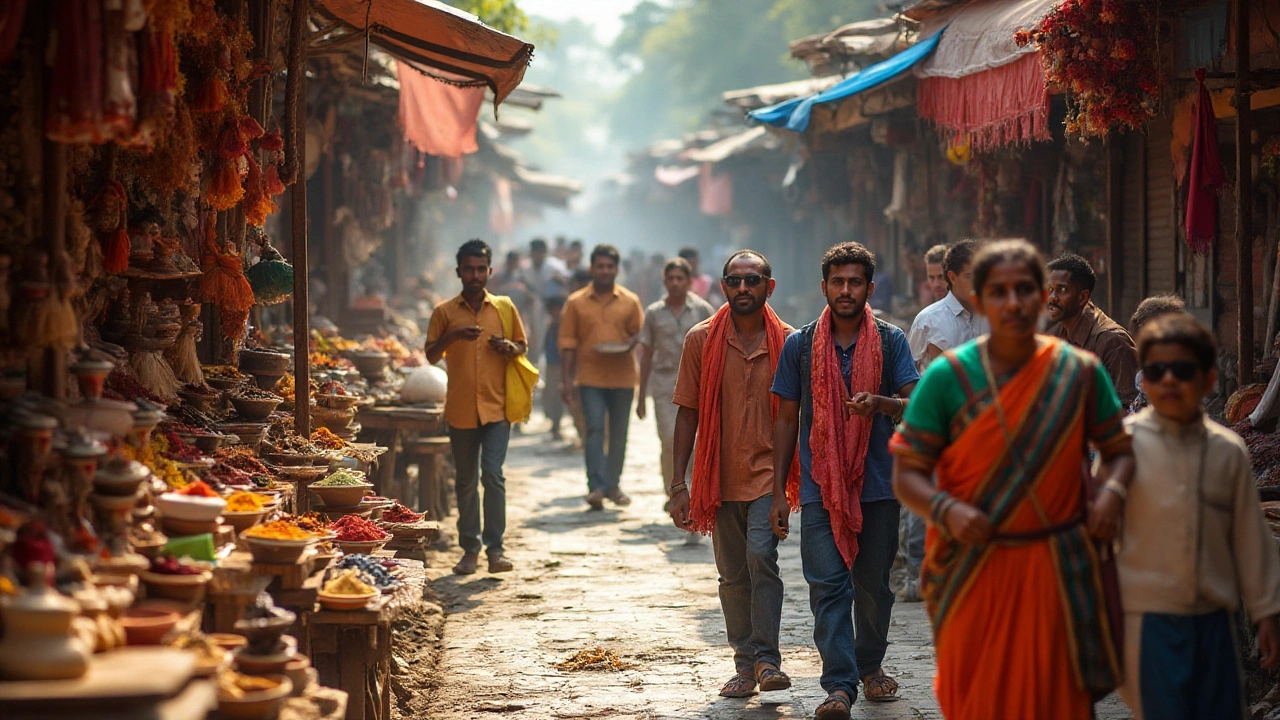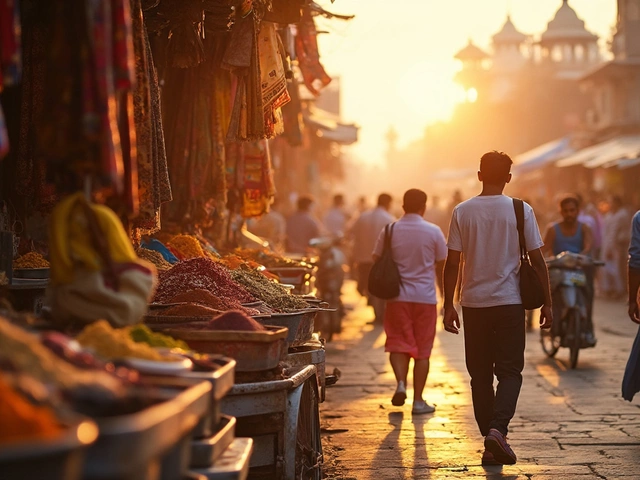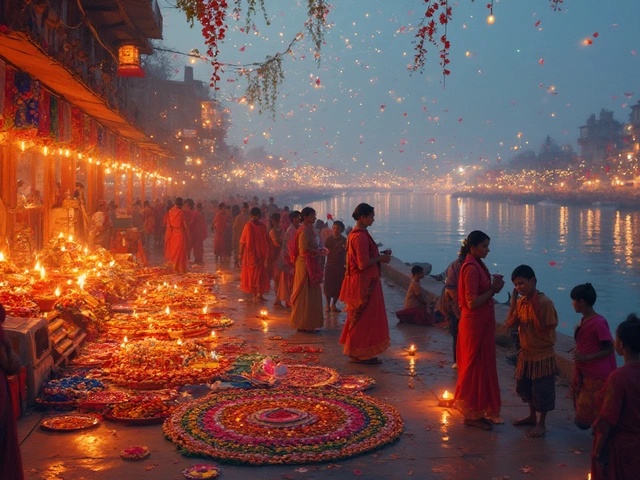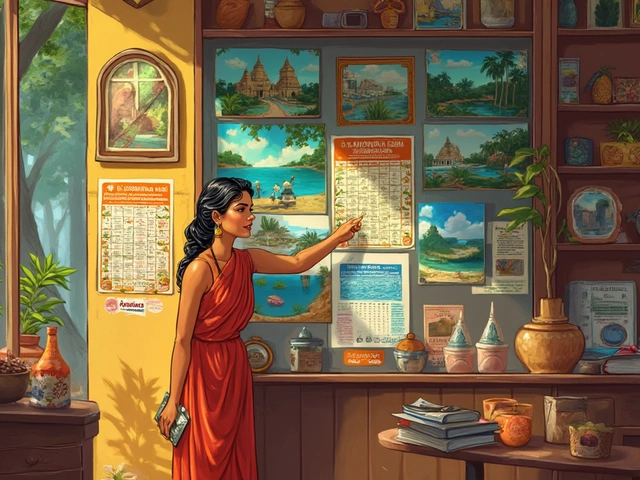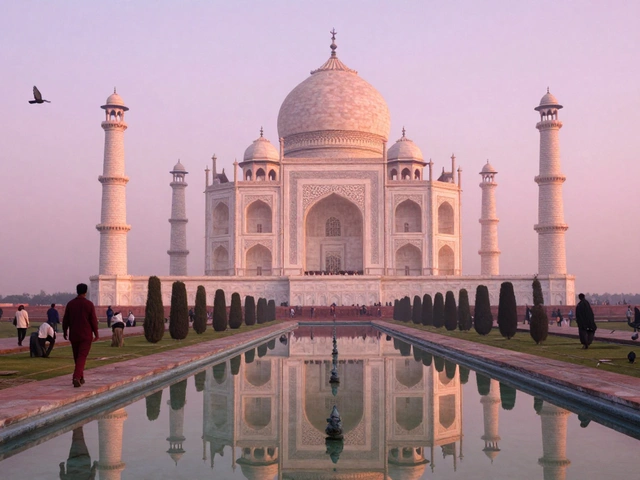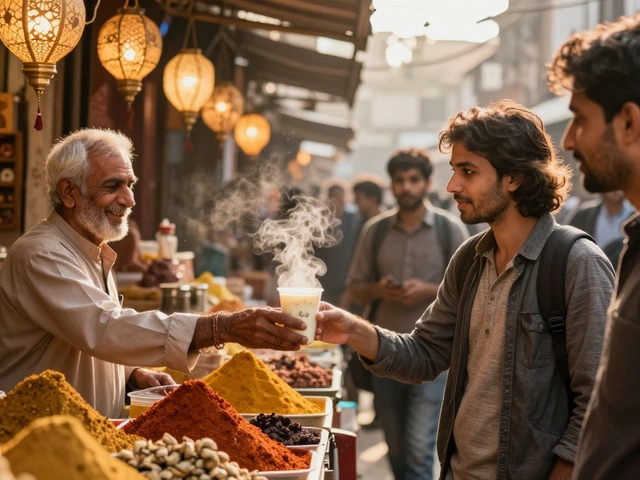Traveling to India doesn't have to be a costly affair. If you're clever about when you go, you can experience all the wonders of this diverse country without burning a hole in your pocket.
Whether it's the bustling streets of Mumbai, the serene backwaters of Kerala, or the majestic wonders of Rajasthan, India offers an unforgettable travel experience. Timing your trip right can ensure you enjoy all these spectacles affordably. Let’s delve into when the best months for budget travel to India are, and find some handy tips to keep costs low while maximizing your adventure.
- Affordable Travel Months
- Budget Accommodation Options
- Cost-effective Attractions and Activities
- Money-saving Travel Tips
Affordable Travel Months
Determining the best time to travel involves more than just eyeing the climate calendar. Every savvy traveler knows that one of the keys to budget-friendly jet setting is picking the right months when prices dip, and crowds thin out. For a country like India, with its sprawling geography and multitude of climates, this task requires a bit of demystifying.
From the towering Himalayas in the north to the sun-drenched beaches of the south, India sees its fair share of tourists wanting a slice of its remarkable tapestry. However, the peak season from October to March can leave your wallet feeling a bit lighter due to a surge in flight and accommodation prices. Thus, savvy budget travelers often find solace in the shoulder season months of April and September — a time when the weather is still agreeable across most regions, but the rates have dropped off considerably from their peak.
"April and September offer the best of both worlds in India - cleaner air after rains and fewer tourists," says a seasoned travel guide from Lonely Planet.
The monsoon months between June and August, typically discouraged for travel due to heavy rains in many regions, can still be surprisingly pleasant in areas like the Ladakh region or the deserts of Rajasthan which remain largely arid. And it’s during these months that flights into major hubs like Delhi or Kolkata can be a steal. Keep in mind though, that the south's lush greenery turns even more picturesque and rewarding, offering a different side of India with fewer tourists clogging up the usual attractions.
Consider Regional Variations
India's weather spectrum is as varied as its cultural landscapes, making it crucial to plan region-specific trips. The northern regions witness a winter chill, while the southern have more tropical conditions. Visiting northern India in late February or September can mean enjoying the sights without either melting in the heat or battling the frigid lows. Meanwhile, the south shines brightly in November and February where the temperatures are on the cooler side, and monsoon waters have receded to uncover the region’s beauty.India offers several budget travel opportunities, especially when choosing to wander off during off-peak times. Besides saving money, you get the chance to experience India’s spotlight-worthy festivals in a less hectic environment. Plan wisely and let the joys of affordable travel reveal themselves through unparalleled cultural immersion.
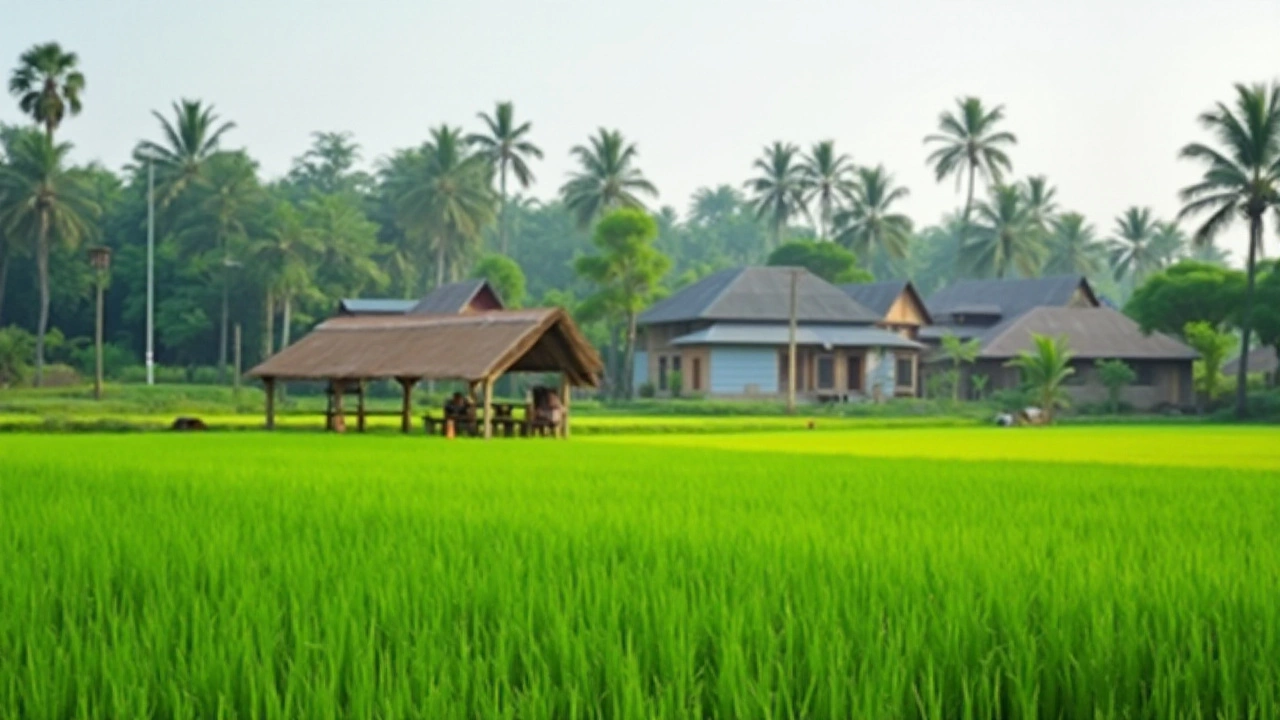
Budget Accommodation Options
Choosing the right place to stay can make or break a budget travel journey in India. With the array of choices available, from hostels to guesthouses and even heritage homes, there’s something for every type of traveler. For those who are keen on meeting a diverse array of people while keeping their expenses in check, hostels are a great choice. Youth hostels and backpackers' accommodations have mushroomed in cities like Delhi, Mumbai, and Bangalore, providing an excellent setting for social interactions and cultural exchanges. A dormitory bed can start at just Rs 300 per night, making it an appealing option for the frugal explorer.
Guesthouses and Budget Hotels
If hostels are not your style, worry not, because India brims with countless guesthouses and budget hotels. These establishments often give you a cultural peek into the lives of the local people and sometimes, a home-cooked meal to start or end your day. Prices can vary significantly depending on the city and the season, but many travelers find a comfortable room for under Rs 1000. A popular choice among many travelers is OYO Rooms, which offers affordable yet satisfactory stays across the country. These are perfect for travelers who are looking for a short yet comfortable rest before venturing out to explore the beauty of the Indian towns and villages.
Unique Stay Experiences
For those who are willing to explore beyond the traditional options, India offers some unique stays that are both budget-friendly and memorable. How about staying in a dormitory at a Gurudwara in Amritsar? Not only is the accommodation free, but you also get a chance to volunteer and immerse yourself in the local culture. Another fascinating experience could be staying at an ashram in Rishikesh or Varanasi, where spiritual seekers find solace and comfort. An interesting approach is to mix a few nights of such unique stays with standard accommodations to balance comfort and adventure.
Source:
"India's diverse stay options ensure that every traveler, regardless of their budget, finds a space that feels just right for their journey." - Travel + Leisure
Online Platforms and Tips
Making use of platforms like Airbnb and Booking.com is another savvy way to secure budget accommodation in India. With these platforms, you can compare prices, read reviews, and often find discounts or deals that can be a significant saving in your travel expenses. If you’re flexible with your travel dates or are open to last-minute bookings, you might find some surprising yet pleasant deals. Keep an eye on festivals and local holidays though, as prices tend to surge due to high demand. Lastly, always check reviews and ratings to ensure that even the cheapest places maintain a standard of safety and cleanliness.
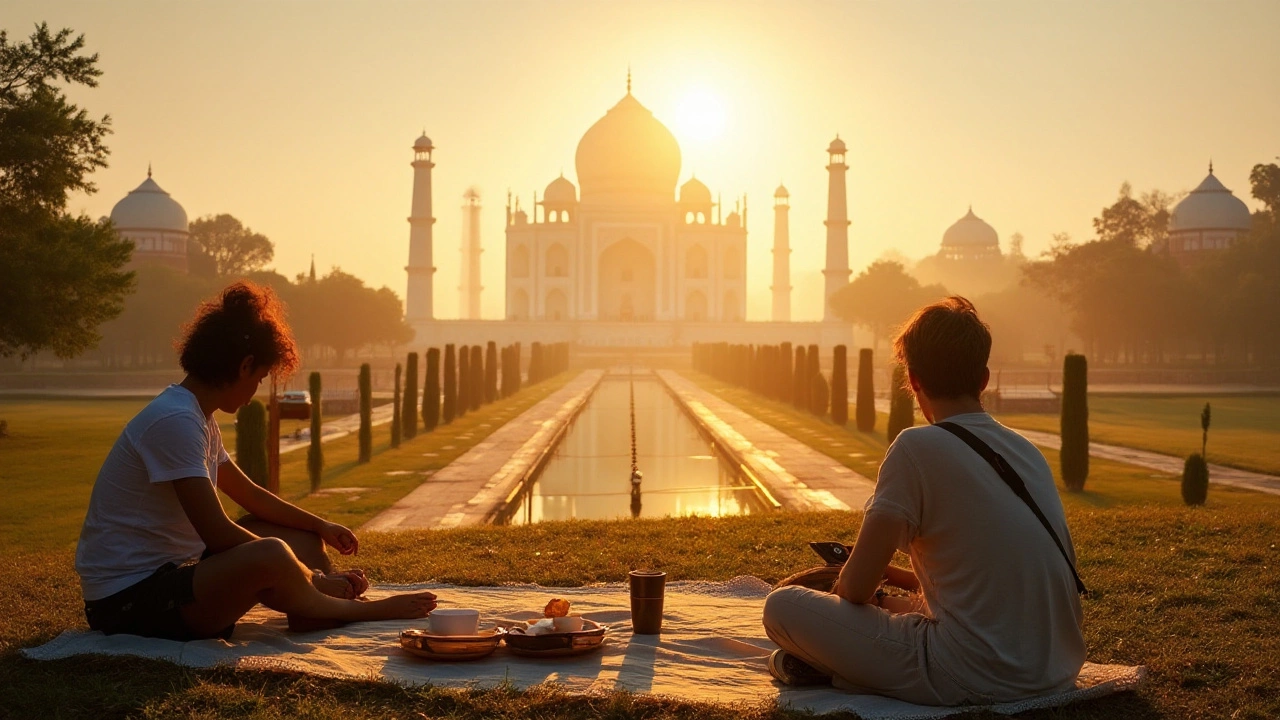
Cost-effective Attractions and Activities
India is a treasure trove of unique and captivating attractions that don't require deep pockets to explore. The timeless allure of the Taj Mahal, for instance, can be experienced at a cost that's surprisingly low compared to major sites around the world. Travelers can marvel at the architectural beauty and rich history of this iconic landmark. While most prefer to visit early to capture its grandeur at sunrise, consider visiting at sunset when it’s less crowded and equally enchanting. A pro-tip for a budget-savvy trip is to explore the Taj Mahal on a full moon night when the entry fees are slightly higher, but the experience is beyond money as the structure glows ethereally under the moonlight.
Exploring India's vast culture goes beyond famous monuments. Take Varanasi, one of the world's oldest inhabited cities, where witnessing the Ganga Aarti is a spiritual experience of a lifetime. People from across the globe are captivated by the Varanasi ghats, which offer a chance to witness ancient rituals that have been performed for centuries. The nightly ceremony is free to the public, though a donation is appreciated and helps preserve this remarkable tradition.
Beaches are another excellent option for budget-conscious travelers, with Goa leading the way. Known for its laid-back atmosphere and vibrant nightlife, Goa’s beaches offer endless opportunities for affordable fun. From the north's happening beaches like Baga and Anjuna to the tranquil sands of Agonda in the south, there’s a spot for every preference. Street markets, such as the Anjuna Flea Market, open once a week and offer a colorful array of goods at bargain prices, perfect for browsing and snagging unique souvenirs.
For those interested in nature and wildlife, India's national parks provide thrilling yet economical adventures. Ranthambore National Park in Rajasthan is a popular spot for tiger safaris. While private tours can be costly, shared jeep safaris can be arranged at a fraction of the cost, offering chances to spot tigers and other wildlife in their natural habitat. Another great place is Kaziranga National Park, home to the world's largest population of Indian one-horned rhinoceroses. Traveling during the off-peak months often results in reduced entrance fees and more personalized experiences due to the smaller crowds.
Visitors can also immerse themselves in India’s rich arts and crafts. Cities like Jaipur and Udaipur are famed for their artisan handwork, from pottery to textiles. Most workshops welcome curious travelers for free and offer items at prices cheaper than retail. Taking home these handmade gems not only supports local craftspeople but also brings a piece of India’s vibrant culture back with you.
As Mark Twain once said, "India is the cradle of the human race, the birthplace of human speech, the mother of history, the grandmother of legend, and the great-grandmother of tradition. Our most valuable and constructive materials in the history of man are treasured up in India only."
“Let us recall Mark Twain's wisdom: ‘India has two million gods and worships them all. In religion all other countries are paupers; India is the only millionaire.’”Embrace this wealth of culture and history without strain on your finances by making savvy choices.

Money-saving Travel Tips
When it comes to embracing the myriad sights and sounds of India on a budget, a few strategic choices can make all the difference. First off, booking your flights well in advance can be a game-changer. Airlines often release their lowest fares months ahead of time. By keeping an eye on such deals and being flexible with your dates, you can snag a cost-effective travel ticket to India. Using flight comparison tools or setting up fare alerts is a smart way to ensure you don’t miss these golden opportunities. Also, try to travel during weekdays as flights tend to be more expensive on weekends.
Accommodation is another area where travelers can significantly cut costs. Instead of standard hotels, which can be costly, consider staying in local guesthouses or homestays, which often offer a more authentic experience at a fraction of the price. These accommodations not only help you save money but also provide cultural immersion, allowing you to interact closely with locals. Websites dedicated to budget accommodation can offer great deals and reviews to help you choose wisely. Couchsurfing has grown in popularity too, offering free stays with locals who open their homes to travelers.
Eating like a local is not only a delightful way to savor Indian cuisine, but it's also light on the wallet. Street food in India is both delicious and affordable. Venture into local markets and roadside stalls for authentic flavors that won’t cost you much. Always pick stalls buzzing with locals, as this is usually an indication of freshness and quality. For those a bit unsure, dishes like samosas, chaat, and masala dosa are safe bets that pack a punch. For hygiene purposes, carry hand sanitizers as you explore the culinary landscape of India.
Using public transport is a resourceful way to move around Indian cities efficiently. The railway system in India is one of the largest globally and is particularly affordable for long journeys. Booking train tickets in advance can secure better seats at lower prices. For city travel, consider local buses, shared auto-rickshaws, or metro systems in urban areas like Delhi and Mumbai. They are not only budget-friendly but also offer a genuine taste of daily life in India.
If your plans include sightseeing, prioritize free or low-entry locations. Magnificent temples, vibrant festivals, and stunning natural landscapes won’t cost you a dime. Make use of apps and online platforms dedicated to discovering free attractions or budget day passes that provide access to multiple places at reduced rates. Don’t hesitate to ask locals for recommendations as they often guide you to hidden gems away from tourist traps.
“Travel makes one modest. You see what a tiny place you occupy in the world.” - Gustave Flaubert
Lastly, keeping a detailed travel budget can help you keep track of expenses. It separates planned from unplanned costs and helps identify areas where spending can be cut down. Opt for off-peak travel months, try bartering when shopping in local markets, and always confirm prices to avoid tourist mark-ups. With these travel strategies, you can explore India, embrace its culture, and enjoy a wonderful trip without straining your finances.
